New Boston Historical Society
New Boston, New Hampshire
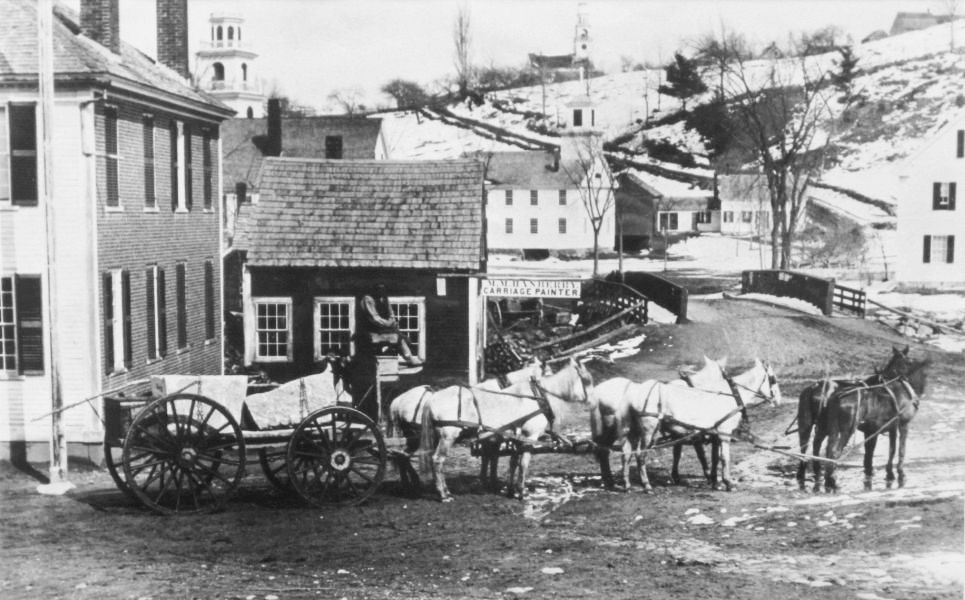
A wagonload of soapstone is about to cross the Central Square bridge c.1875
New Boston's Bridges
—A survey of some (not all) of our town's historic bridges—
Mary Atai wrote about "The Village Bridge" for the December 2021 issue of the New Boston Beacon. Here's an excerpt from Mary's column:
As New Boston's center of commerce began to change from the upper village to the lower village in the early 1800s, it became necessary to build a bridge, connecting the road from Amherst to Weare. The original bridge was a wooden structure, probably built in 1828. Over time, the increased weight of vehicles, wood rot, and periodic flooding, caused the wooden structure to be replaced with a wrought iron bridge in 1879, costing $700...
Over the years, this iron bridge required repairs several times, including after the flood of 1936 and after a load of soapstone being transported from Francestown broke through the flooring. There is even a story about a circus train passing through New Boston, with its elephant doing significant damage to the bridge.
But the incident that ultimately ended the use of the iron bridge happened on May 12, 1947. A tractor trailer carrying a 67-ton power shovel crossed over the bridge, rendering it irreparable. The vehicle made it across, but then the bridge, which had a posted 6-ton limit, immediately collapsed. Of course, not having a bridge in this central location caused all sorts of inconveniences to the people of the town... The new bridge, which we still use today, was in service by January, 1948. It is a reinforced concrete structure with a 70-foot span.
The town sued the trucking firm (C.E. Hall and Sons, Inc. of Somerville, Massachusetts) responsible for the collapse of the iron bridge for $20,000. The driver of the vehicle, John L. Julianus, admitted he had seen the posted weight limit, but reasoned that since the vehicle was long, not all the weight would be on the bridge at any given time, so he could make it across. He was wrong.
The Village Bridge in the center of New Boston has always been the busiest in town. The photographer must have waited for a lull in the traffic to capture this winter scene in 1892, looking west from the general store:
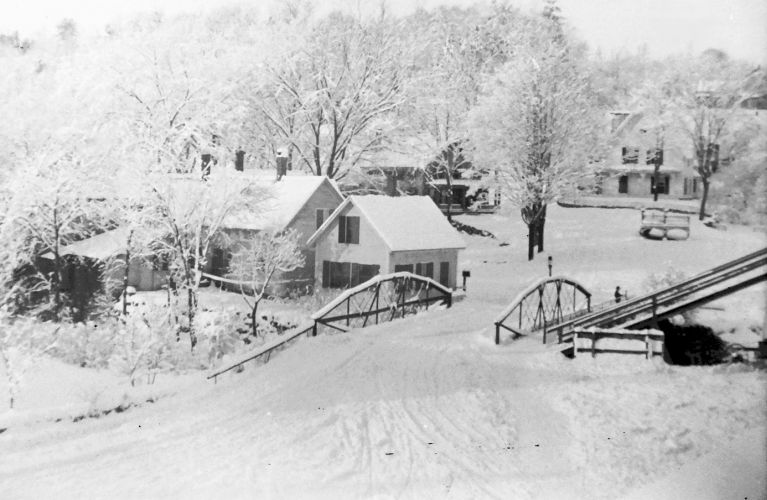
To the right of the iron bridge a steep ramp leads to the second floor paint shop of a carriage factory.

View looking east from The Tavern c.1900 before the white house in the foreground was moved behind the church to make way for a new brick library.
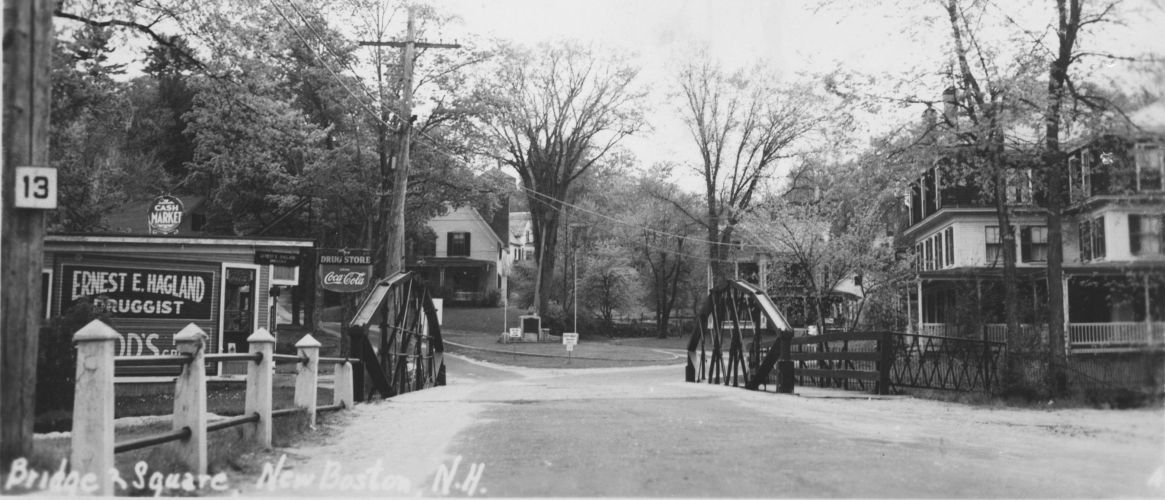
Hagland's drug store (left) in this 1930s photo is now Tates Gallery.
The brick-sided Columbian Hotel in the photo at the top of the page was enlarged and renamed The Tavern (right).
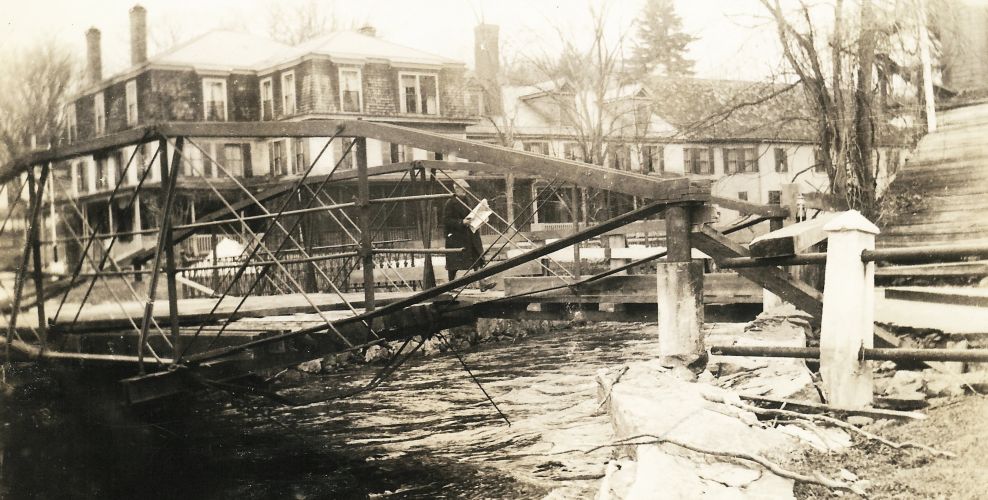
Bridge damage from the Flood of 1936 doesn't worry an intrepid newspaper reader.
That's The Tavern in the background.
Depot Street Bridge
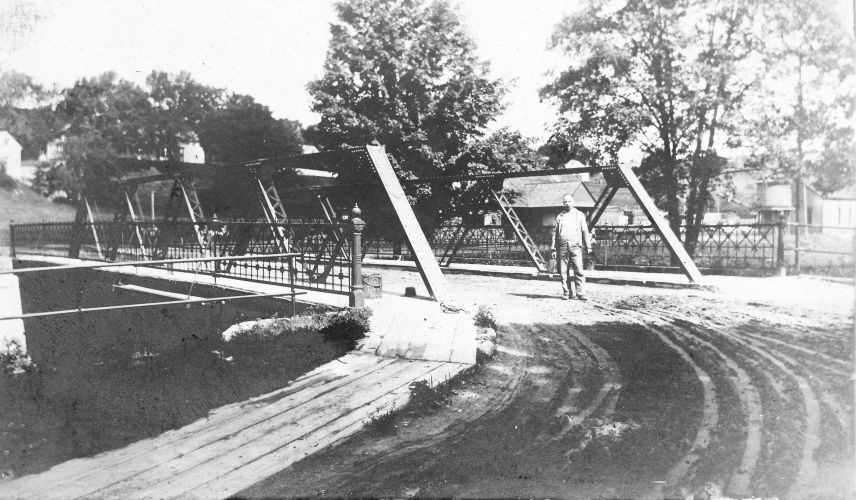
The New Boston train station is directly behind the railwayman; to his left can be seen the water tank for the steam locomotives.
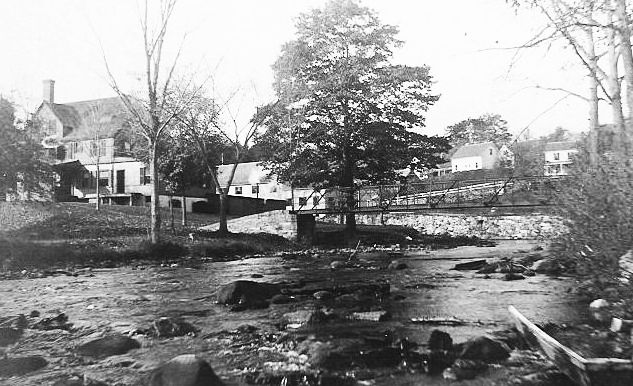
Visitors arriving by train could walk across a footbridge from the railroad depot to the Creamery, then across the Village Bridge to The Tavern.
Mont Vernon Road Bridge
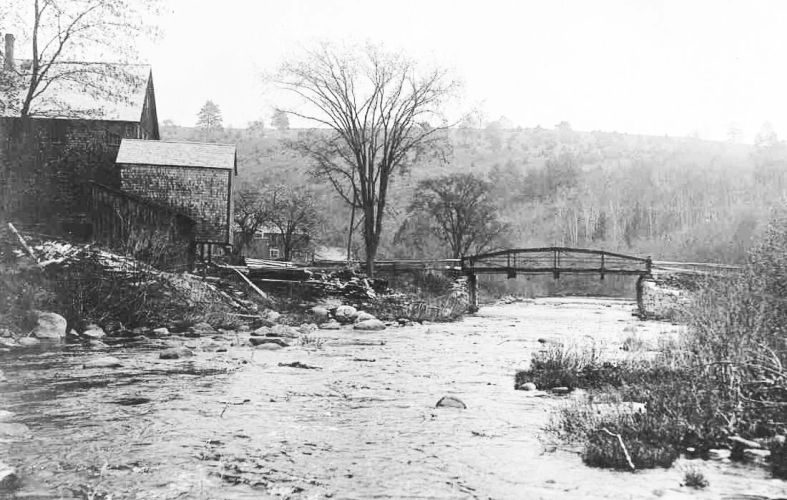
Sutherland's Mill and bridge before the Flood of 1936; looking east towards Hooper Hill
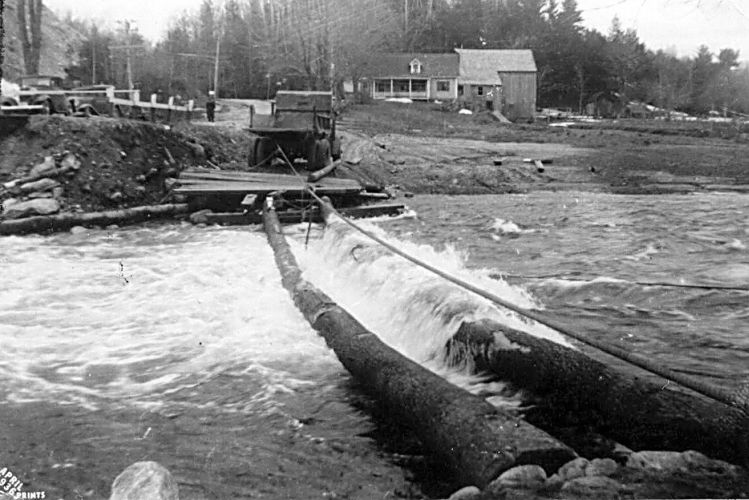
Building a temporary bridge after the Flood of 1936; looking south
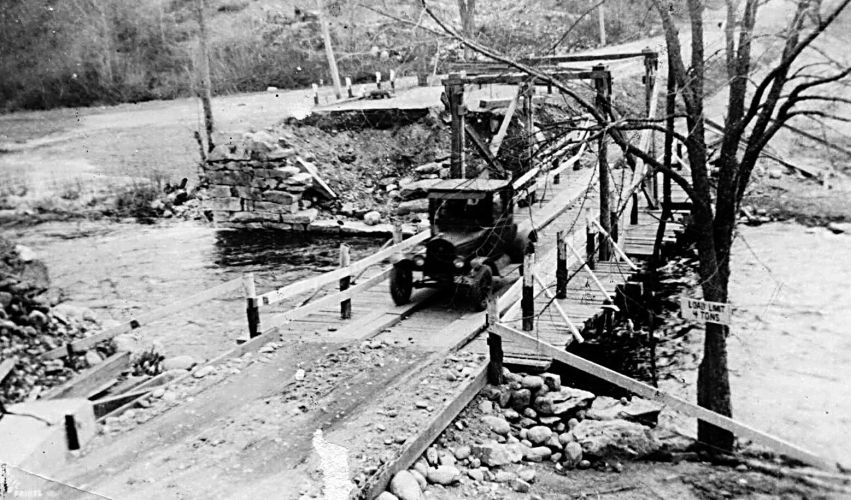
Can you blame the driver for crossing the temporary bridge as quickly as possible?
Butterfield Bridge
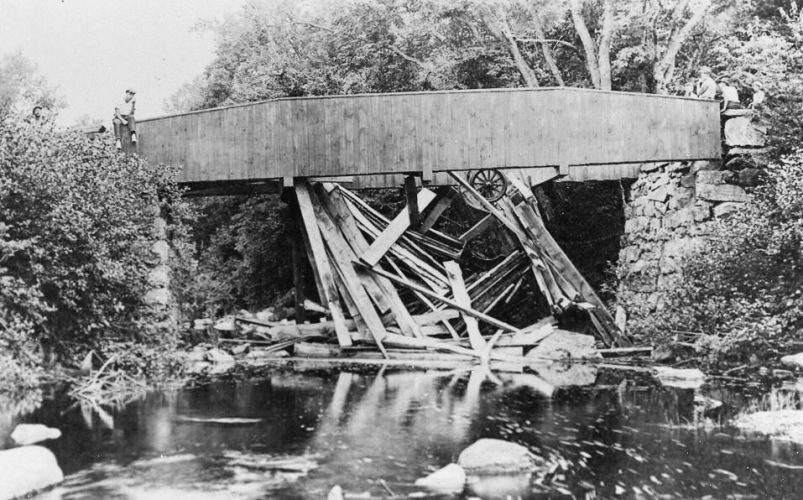
A truck carrying a load of lumber broke through the Butterfield Bridge in the 1920s.
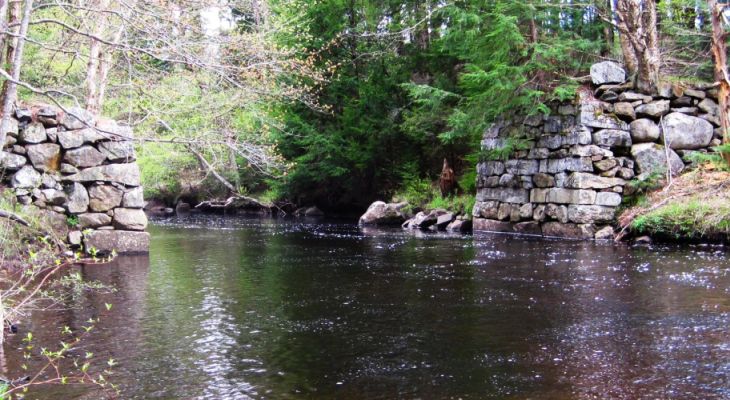
The stone bridge abutments are all that remain today.
If you kayak downstream you'll see more stone abutments where the Moley Bridge once connected McCollum Rd to Lyndeboro Rd.
Library Bridge
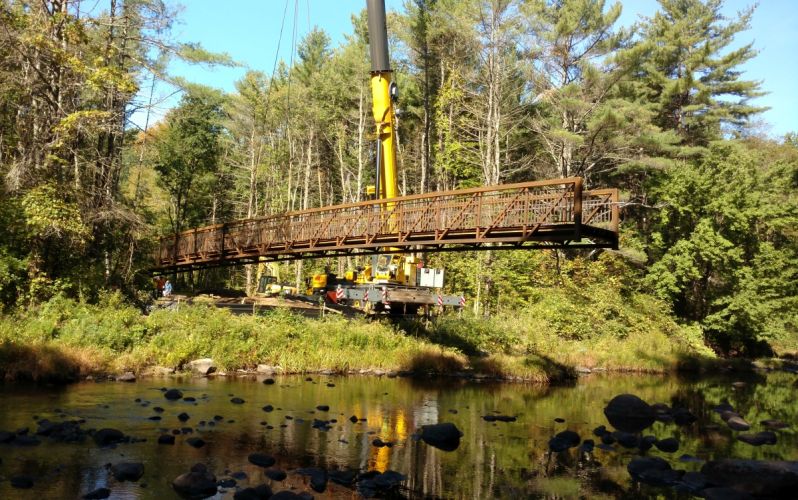
Randy Parker designed a footbridge for a trail that connects Mill Street to the new library.
The bridge is made of unpainted steel for environmental reasons, like the Rail Trail footbridge.
(Photo by Dick Moody of the bridge installation in 2016)
